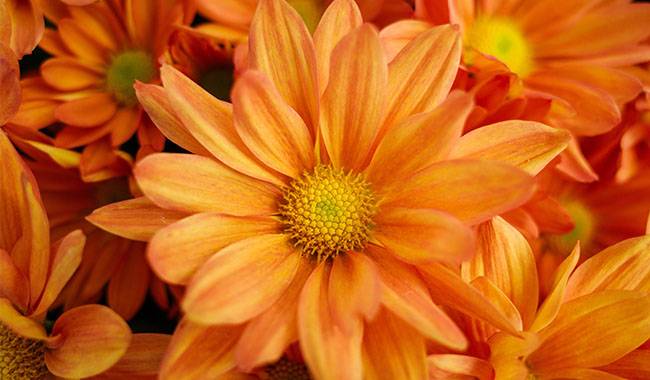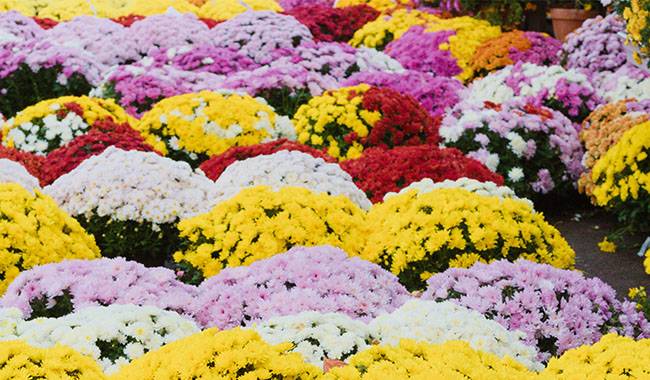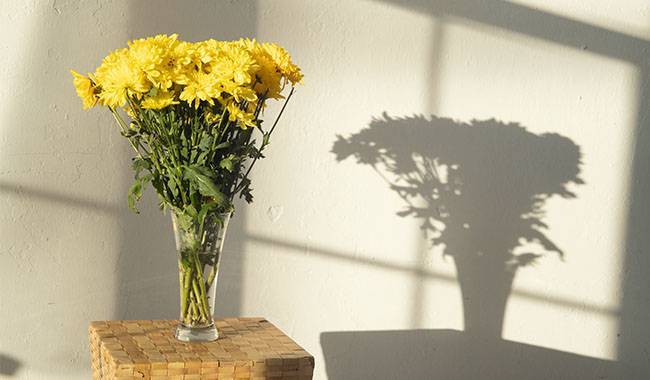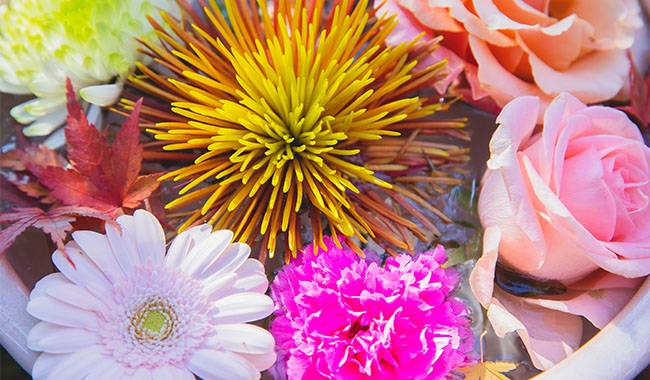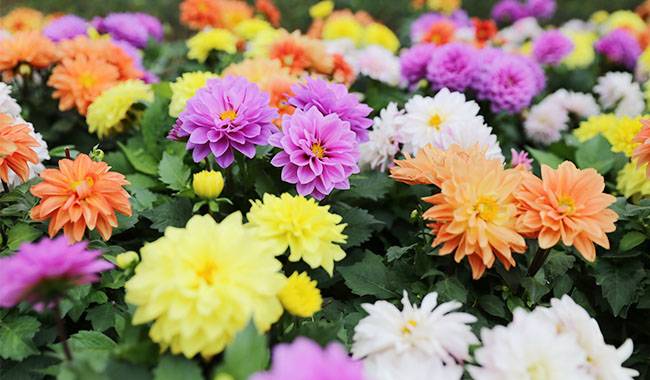
There are many questions from friends: How to plant chrysanthemums? Why do chrysanthemums become lighter? How to cover the chrysanthemums with a blanket in winter? When and why should I bury chrysanthemums in a ditch? Read about it in our article.
The chrysanthemum is deservedly called the queen of autumn – because it blooms luxuriously until frost. But not every queen can boast of such resistance and character!
The hardiest specimens can even bloom until mid-December, and if you move the flowering shrubs into pots in time, you have every chance of enjoying the chrysanthemum’s blooms until Christmas!
Chrysanthemums are also considered to be an ideal cut flower. If properly cared for, chrysanthemum bouquets can stay fresh for a full month. Chrysanthemums can easily handle long trips.
It requires little care and is cold and drought tolerant. It seems that this flower is definitely self-sufficient. But some subtle care methods can be useful for careful flower lovers.
OVERVIEW OF CHRYSANTHEMUM CULTIVATION
Sowing: Sowing in the open in May and seedlings in April. Seeds can be sown under winter, no later than two weeks before frost.
Flowering: late summer/early autumn.
Light: Bright sunlight.
Soil: Dry, well-drained, nutrient-rich, loamy, slightly acidic, or neutral.
Watering: abundant. Fertilize three times a season, turning mineral and organic fertilizers into liquid form. First fertilization within 7 weeks after planting.
Propagation: Annuals are propagated by seeds only, perennial and cultivated species are mostly propagated vegetatively (in clumps and cuttings).
Insect pests: nematodes, aphids, grassworm.
Diseases: gray rot, rust, septicemia, powdery mildew, bacterial carcinoma of the roots.
Chrysanthemum is a perennial herb in the Asteraceae or Composite family and an annual herb. In Greek, it means “flower of gold” or “flower of the sun” because the inflorescence of many species is yellow.
According to information, the genus has 29 species in the wild, distributed in northern and temperate zones, mainly in Asia. Archaeologists point out that it was cultivated by the ancient Chinese more than 2,500 years ago, and its petals were used as food.
Chrysanthemum was even mentioned by Confucius himself in the book Spring and Autumn! And in China, the chrysanthemum is also known as the “king of flowers”. Later, the Japanese also developed a cult of this flower, so much so that only members of the royal family were allowed to wear clothes with chrysanthemum patterns.
In Europe, the flower first appeared in the eighteenth century but was not actively cultivated until the nineteenth century. Scientists believe that the common garden chrysanthemum (Chrysanthemum hortorum) was formed by crossing two Asian species, the small-flowered Chrysanthemum Indicum, which is native to Japan.
and Chrysanthemum morifoolium from China, but some breeders believe that the ancestors of garden chrysanthemums are Chrysanthemum Indicum and Chrysanthemum chrysanthemum.
Chrysanthemum is so loved by breeders that experiments to breed new varieties have not stopped so far, especially because chrysanthemum is not only a beautiful flower for human beings but also the last rhythm in the symphony of autumn flowers.
BOTANICAL DESCRIPTION
Chrysanthemum includes perennials and annuals, some species are herbaceous and some are semi-shrubs. The rhizomes of chrysanthemums are branched and develop parallel to the surface.
Shoots may be naked or maybe pubescent. The color of the leaves is usually light green, although they may be darker.
The florets are arranged in a basket shape, sometimes quite large, and usually consist of a single row of tubular median flowers and ligulate marginal flowers, although in many hybrid cultivars the flowers are arranged in multiple rows to form a dense inflorescence called a daisy pedicel.
The fruit of the chrysanthemum is a seed. A common crop variant is the so-called garden chrysanthemum or chrysanthemum mulberry. It is sometimes referred to as Chrysanthemum Chinensis. it is a complex group of varieties and hybrids with a rather confusing history.
HOW TO PLANT CHRYSANTHEMUM
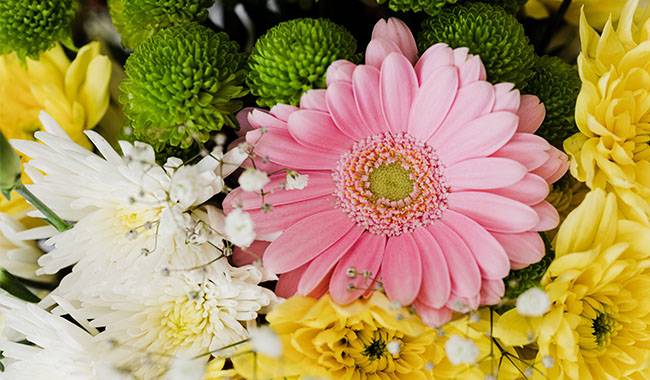
Growing from seed
The easiest way to propagate chrysanthemums is to take cuttings and divide them into seeds, but often a seed chrysanthemum is the real pride of the breeder. Propagation by seed can be used for both perennials (such as Korean chrysanthemums) and annuals. We will show you how to breed chrysanthemums using annuals as an example.
In May, after the spring frost, place 2-3 seeds in wells positioned 20-25cm (7.8-9.8inch) apart, sprinkle with warm water, cover with soil, and then cover the bed with garden film to keep the heat and moisture in the soil.
As soon as the seedlings will sprout, remove the film, carefully loosen the soil and eliminate weeds. After ten days, feed the seedlings with diluted Ideal or Rainbow.
When the seedlings grow to 7-10cm (2.7-3.9inch) tall, leave a strong plant with 3-4 true leaves in the well and the rest of the seedlings can be placed elsewhere. Your annuals will bloom in early August. If you want your chrysanthemums to bloom early, you have to start with seedlings.
Seedling planting
Mix equal parts of greenhouse soil, humus, and peat at room temperature and place the seedlings in a shallow box. The mixture is best bought in a store where it is sold sterilized, or if you decide to make your own, don’t forget to sift it out and heat it at 230-266°F (110-130°C).
Put crushed bricks or clay in the bottom of the box to create a drainage layer, then put potting soil on top and scatter the seeds on top. Cover the seeds of annual chrysanthemums with a 0.5cm (0.19inch) layer of soil. Do not cover the seeds of perennials, just press them gently against the soil.
Now spray the surface with a sprayer, cover the box with plastic wrap or glass and keep it at 73-77°F (23-25°C) with occasional aeration and spraying with warm water to keep the soil from drying out.
If nothing unexpected happens, sprouts should appear in a week and a half to two weeks. Now move the container to the brightest place and start gradually acclimating the sprouts to the environment by removing the glass or film for one hour, then two hours, and so on until the lid is completely removed.
If the seedlings are too dense, when 2-4 leaves (not cotyledons, and all that) are present, take cuttings in a cup with the same soil mixture, taking care not to damage the roots of the chrysanthemum seedlings.
To do this, moisten the soil in the box heavily before harvesting. Weak or overly elongated seedlings are discarded. After the seedlings are picked, they are sprayed with zirconite or an Aipin solution to help them root quickly.
Seedling care
Keep nesting chrysanthemum seedlings in a room with a temperature of 60-64°F (16-18°C), water them as necessary, and feed them twice a month with a compound fertilizer solution. If necessary, arrange for additional fluorescent lights. Be prepared for the seedlings to grow slowly: in a month and a half, they will reach a height of about 20cm (7.8inch).
PLANTING AND PROPAGATION OF CHRYSANTHEMUM
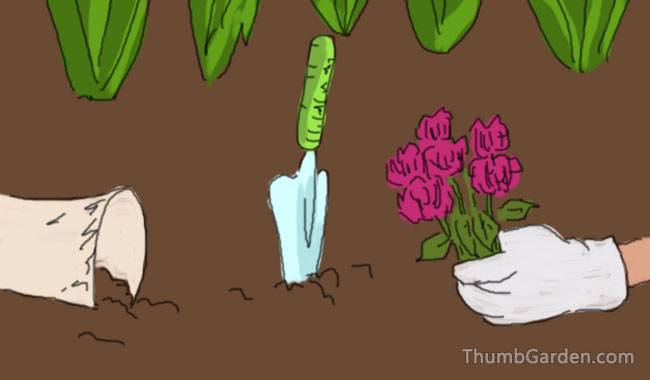
When to plant
Plant chrysanthemum seedlings in late May or early June in the spring when there is no return frost. In the fall, chrysanthemums can also be planted at least two weeks before frost.
When choosing a site for chrysanthemums, keep in mind that this plant likes heat and light and does not tolerate waterlogged roots, so plant them in an elevated location with at least five hours of full sun per day and with safe wind protection.
Neutral or slightly acidic, nutrient-rich loamy soils are preferred. Sandy or clay soils should be improved with organic fertilizer. However, chrysanthemums do not like unprepared fertilizers and prefer humus or biofertilizers, which are applied to the soil along with compost before planting the chrysanthemums. Just don’t over-fertilize, so as not to increase the greenness of the plant, which is not conducive to flowering.
How to plant
To plant chrysanthemums in the open field, choose a cloudy day or even better, a rainy day. It is better to plant chrysanthemums, not in a well, but in a ditch, observing the distance between seedlings as 30-50cm (11.8-19.6inch), depending on the variety and species.
After planting, it is advisable to soak the furrow with a rooting agent solution at a rate of 1 gram per liter of water to enable the plants to form a root system more quickly.
Immediately after planting and watering, prune – remove the growing points of chrysanthemums. Now cover the seedlings with mulching material (e.g. Luthier) to create an optimal microclimate for rooting and growth. When you are sure that the seedlings have rooted and are growing, remove the cover.
Cuttings
Another way to propagate chrysanthemums is by taking cuttings. In spring, when the daytime temperature reaches 70-78°F (21-26°C), use a sharp, clean knife to cut cuttings with buds from the mother plant (not for side shoots, only for shoots that grow directly from the roots of the chrysanthemum) a few millimeters above the leaves; the cuttings should be 6-7cm (2.3-2.7inch) long.
The lower end of the cuttings is dipped in a growth stimulant (e.g. Convin) and inserted into a container containing moist nutrient soil covered with 2cm (0.78inch) of sand at an inclination of 35-45º. The cuttings should be kept in the sand and not touch the soil.
When chrysanthemum cuttings are rooted on a light windowsill, the soil in the container should be moist and the air temperature should be 59-64°F (15-18°C). After 2-3 weeks, the cuttings are rooted and can be transplanted to the open ground.
Take care of chrysanthemums in the garden
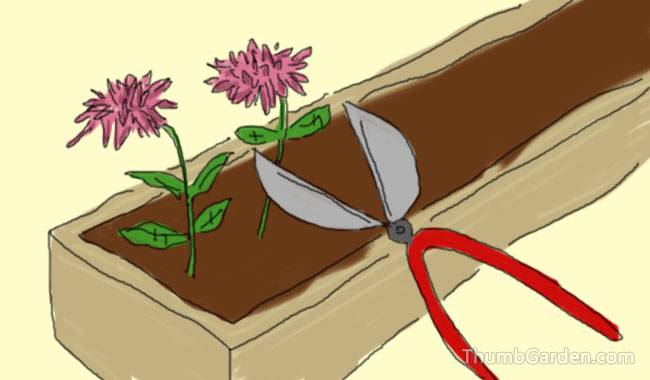
How to care for
Growing and caring for chrysanthemums is not particularly difficult, but there are certain rules that even amateur florists need to know. For example, seedlings were grown in the open ground, which grows strong and put out their eighth leaf, need to be pruned to strengthen the branches.
Likewise, you should prune those young side shoots that will soon appear, and then you will get a nice bush that will look like a fluff ball when it blooms.
This does not apply to large-flowered daisies, whose side shoots are best removed, leaving only the strongest ones. The shoots taken off can be rooted easily. Some tall chrysanthemums need support and can be held in place with metal stakes, nets, or wire structures to prevent them from falling apart.
Watering
As for water, chrysanthemums should be well watered every time: insufficient water will make the stems woody and the flowers less attractive.
Use only rainwater or settled water (you can add a few drops of ammonia). Avoid getting water on the leaves and pouring it under the roots. Water while loosening the soil around the bush and removing weeds, unless you mulch the area after planting.
Fertilization
Chrysanthemum care also includes mandatory fertilization. Fertilize chrysanthemums at least three times during the growing season, alternating between mineral and organic fertilizers.
In terms of mineral fertilizers, chrysanthemums respond best to nitrogen fertilizers (ammonia nitrogen is best) in the early stage of growth to make the green matter grow actively and to stimulate intensive flowering, they are fed with phosphorus and potassium fertilizers in the budding stage.
Fertilizer is poured by the plant as a solution under the roots after rain or the day after watering. The first application of fertilizer should be made within 6-8 weeks after sowing. Of the organic fertilizers, chrysanthemums like to blow cow or bird manure, but the golden rule for florists says it is better to feed the plants less than to burn them.
How to transplant
In one place, chrysanthemums should not be grown for more than three years, otherwise, they will start to be capricious: the flowers become lighter and the plants start to get sick more often.
Therefore, you should dig up three-year-old plants in the spring and report them. Transplanting is usually accompanied by the division of the shrub – another way of propagating chrysanthemums.
Without damaging the roots, carefully dig up the shrubs, shake off the soil, and use a sharp knife or secateurs to separate the overgrown bushes into smaller bushes with their roots. Now propagate these bushes in a sunny place in the usual way.
Diseases and their treatment
If chrysanthemums are allowed to overgrow or if good hygiene is not followed, they can be subjected to fungal diseases.
- Verticillium wilt (the fungus penetrates the roots and causes the leaves to turn yellow and the stems to die)
- powdery mildew (affects shoots, leaves, buds, and flowers, covering them with a harmful white coating).
- Rust disease (all above-ground plant organs are covered with leaf spots, which then turn brown, leaves turn yellow, and stems become thin).
- Grey rot (brown spots appear and are covered with a fuzzy, rot-causing layer over time).
Fungal infections can be treated with preparations containing copper – for example, copper oxide can successfully control septoria, gray rot, and rust. Bordeaux solutions can destroy powdery mildew and gray rot, and copper soap emulsions and colloidal sulfur can kill rust.
However, the most important thing is not to let chrysanthemums germinate indiscriminately, but to follow the rules of plant care and detect diseases in time to be able to save them.
Unfortunately, chrysanthemums are sometimes affected by viral diseases: mosaic (chrysanthemum leaves with mottled mosaic); aspergillosis (mottled leaves and deformed flowers); and dwarfism (stunted growth and premature flowering).
Unfortunately, virus-infected plants cannot be cured, so they must be found, dug up, and destroyed in time. As a preventive measure against the virus, plants should be propagated using sterile tools and virus-carrying insects should be controlled.
Chrysanthemum pests
Among insects, nematodes are the most common pest of chrysanthemums. The presence of nematodes can be detected by the mosaic spots that appear on the leaves, which become darker over time.
It is useless to fight this fact, but as a preventive measure, before digging or planting (transplanting) chrysanthemums in the fall, spray the plants with a solution for formin and treat the soil with formalin. Specimens infected with nematodes must be destroyed.
Another pest of chrysanthemums is the aphid that settles under the leaves or flower buds. The insects themselves, as well as the larvae, suck the sap from the plant, thus retarding the growth and flowering of chrysanthemums.
If you are dealing with a single aphid colony, it will be destroyed along with the leaves it settles on, but if the plant is infested with aphids, spray it with an insecticide with soap and water.
Chrysanthemums are also sometimes infested by lacework, which feeds on larvae in the same way as aphids. As a result, the buds will not bloom and the leaves will become mottled and brown and die.
Spray stink bug-infested plants with a solution of baby shampoo (1 teaspoon per 10 liters of water). Treat chrysanthemum bushes with phosphamidon as a preventive measure. Slugs and snails in the garden pose a threat to chrysanthemums because they devour the leaves, flowers, and stems.
However, you should treat them in an organic way, i.e. using gentle treatments that do not damage the garden ecosystem, in which snails and slugs have an important hygienic function.
Therefore, in gardening, preventive measures to counteract them are welcome: correct selection and combination of plants, natural control of the population of pests by attracting birds, etc.
If a malfunction occurs and clumps start to devour your chrysanthemums, collect them by hand, dig plastic edges around the bush to prevent the clumps from getting close to the bush, sprinkle crushed eggshells around the bush to prevent the snails from growing. Close to the plants…
Finally, place beer in the bowl of the beer garden and collect the “harvest” after a while.
CHRYSANTHEMUMS HAVE FADED – WHAT TO DO
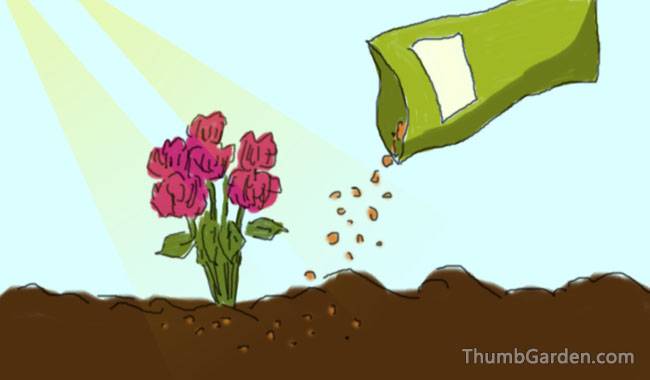
Post-bloom care
In early fall, give your frost-tolerant chrysanthemums a final dose of potassium and phosphorus fertilizer to improve their frost resistance.
With the onset of frost, cut the above-ground parts of overwintering chrysanthemums (all the above Korean varieties with small flowers) to a height of 10-15cm (3.9-5.9inch) above the ground and plant them carefully covered with 30-40cm (11.8-15.7inch) thick dried leaves.
If the winter in your area is too cold for snow, you can cover the site with bushes or lap wood on top of the mulch. The mulch should not be indestructible, as the plant should not wilt under such a “blanket”.
How to keep chrysanthemums alive in winter
Tall, large-flowered, heat-loving varieties cannot survive our outdoor winters. There are many ways to preserve them.
One method: Store clumped mother shrubs in a wooden box in a bright, cool place 35-42°F (2-6°C) with about 80% moisture content in the air.
If you don’t have many shrubs, plant each one in a separate container. Water the chrysanthemums occasionally to slightly moisten the soil of the clump. You can simply store the mother shrubs and their clumps in a cellar at 32-39°F (0-4°C) in tight piles on top of the soil.
There is another way to store chrysanthemums. It is done in the garden by digging a trench 50cm (19.6inch) deep and of any width and placing the mother plants of chrysanthemums in it, filling the distance between them with soil.
In order to kill the pathogens of fungal and viral diseases, chrysanthemums are kept in the open trench until the coldest weather.
When the frost comes, the ditch is covered with boards or planks, slabs, or other materials to form a “lid” for the ditch, and leaves are laid on top, then the leaves are covered with soil, and then the covering materials are put down to prevent them from being blown away by the wind.
This method is inconvenient because it is difficult to control the state of the plants in winter.
As a final reminder: small-flowered chrysanthemums, Korean chrysanthemums, and Chinese and Russian hybrids overwinter well outdoors; greenhouse-grown chrysanthemums can also be dug up in winter for large-flowered chrysanthemums, foreign hybrids, and varieties for which little is known about new chrysanthemum varieties.
SPECIES AND VARIETIES
Despite the outstanding achievements of breeders in producing new species and varieties of chrysanthemums, there is still no uniform system for classifying these plants. They are classified into 10 classes in Germany, France, and China, and into 15 classes in the UK and the US.




